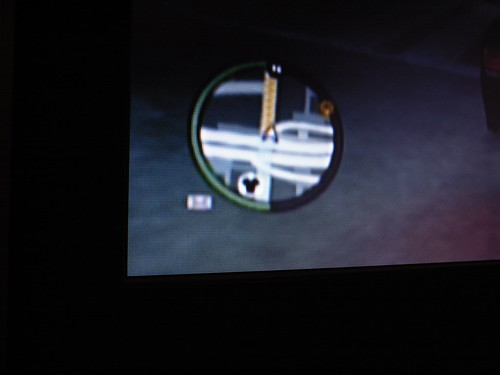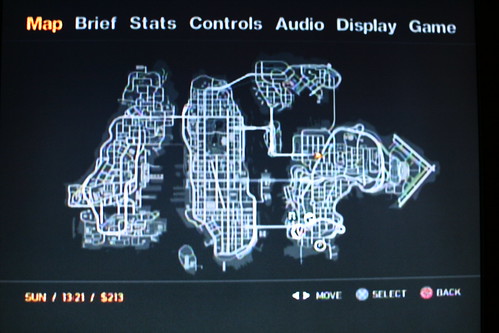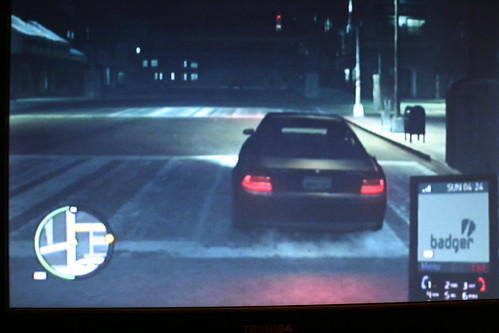 Toying around Grand Theft Auto IV lately, I've been interested in how today's ubiquitous computing can help to create original game play features in a console game. There are three interesting elements about this topics: the in-game GPS, the use of the cell-phone in the game and the role of tangible interactions.
Toying around Grand Theft Auto IV lately, I've been interested in how today's ubiquitous computing can help to create original game play features in a console game. There are three interesting elements about this topics: the in-game GPS, the use of the cell-phone in the game and the role of tangible interactions.
The GPS in the game is an important feature as it guides you to specific place where you have to do specific things. But you often end up relying more on it to drive than looking the street view since the action takes place in a very dark areas (especially if like me you have a tendency to bump-and-destroy lots of street lamps). So far, I have only used cars with graphical indication but I've heard there are some luxury cars which talks the player through the streets. Unlike lots of real situation the markers and waypoints that appear on the tiny maps are really accurate and often well updated. Given the complexity of Liberty City, driving is much simpler than in past GTA games.
So, to some extent, geolocation in GTA is used as an enabling feature to help people getting around and making sense of that complex environment. You can avoid to use it but then the gameplay becomes weird since the world is very big and you might miss the place where the action is. That said, I haven't seen any glitch or GPS trouble yet; I would be intrigued if the game designers used GPS miscalculation as a challenge.
In this case, the cell-phone is both a trigger for actions (like the GPS) but also an intriguing social feature that is less utilitarian. See for example what some game critics think about it:
"You'll keep in touch with your dates, friends, and some of your enemies using another of GTAIV's great new features: a cell phone," he says. "There's no unwieldy conversation system to deal with; you simply choose which friend you want to call, what you want to talk about (it could be work, a fun activity, or asking for a favor) and then, assuming that he or she answers the phone, the conversation plays out."
This results in appreciable gameplay benefits. "The rewards that you get when another character likes you enough vary depending on who it is," Calvert explains. "Without wishing to give away specifics, befriending a lawyer can prove useful if you're having trouble with the cops, for example, and having a nurse on your friends list can literally be a lifesaver." (...) "The mobile phone is central to this, allowing you to make phone calls and text-message people one-handed while you walk or drive; networking, socialising, organising, and listening to that ringtone you downloaded for America's Next Top Hooker," Bramwell explains. "When you fail a mission, you can answer a text to teleport yourself back to wherever you spawn after the cut-scene briefing finishes.""
Finally, the pace of cell-phone use is sometimes so important that it nicely reflects the current discussion about how mobile devices help hyper-coordination and attest of the intensification of relationships between people (mmh game characters) close to what Antony Townsend describes in his paper Life in the Real-time City: Mobile Telephones and Urban Metabolism . In the real-world hypercoordination is now a given, in GTA IV it's clearly a game feature.
While the GPS and cell phones are in-game elements, the last ubicomp feature in GTA IV is certainly the interaction mode using the discontinued sixaxis: the ability to sense both rotational orientation and translational acceleration along all three dimensional axes, providing six degrees of freedom. I personally found it problematic and not accurate, way too sensitive by my standards. And it seems that I am not alone having that feeling, using a tangible interface to control an helicopter may sound cool at first glance but it's awfully bad in GTA IV.




